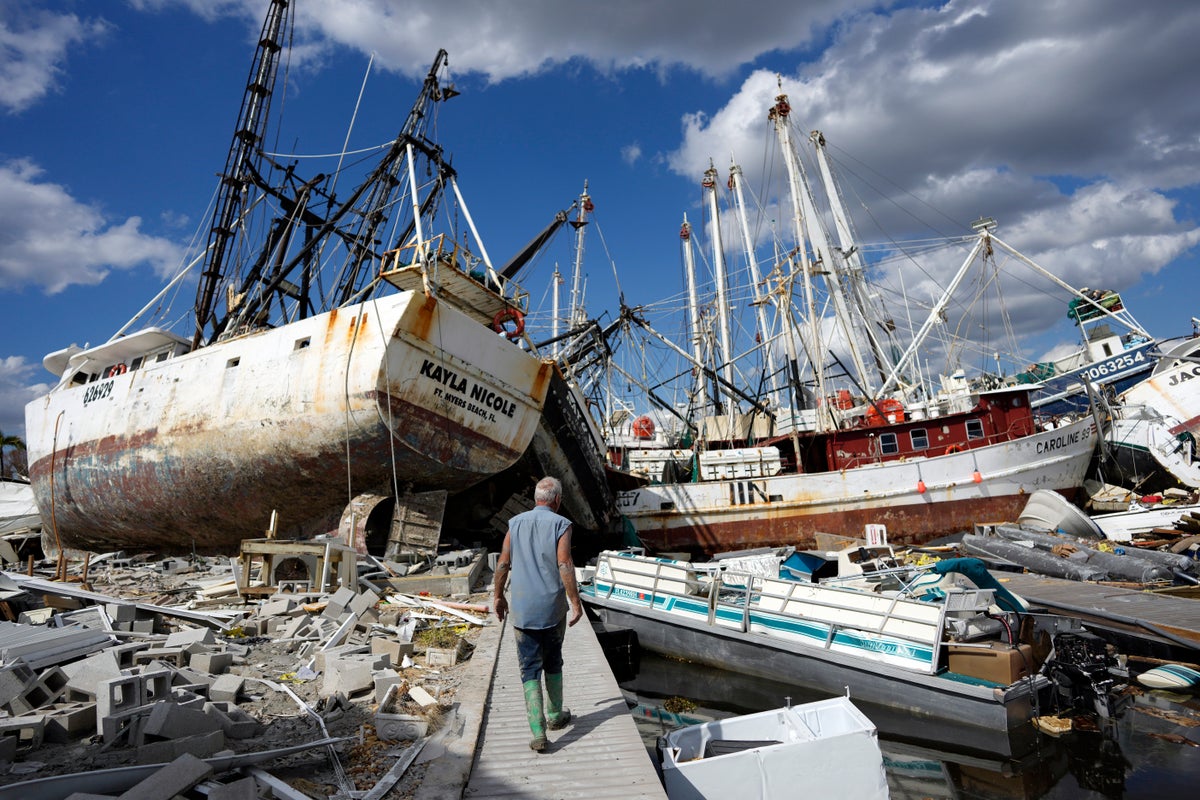
Residents of Florida's Gulf Coast barrier islands were returning to assess the damage from Hurricane Ian to their homes and businesses on Thursday, despite limited access to some areas.
Gov. Ron DeSantis awarded a contract to begin repairs on the Sanibel Island causeway earlier this week, but it might not be passable until the end of October. In the meantime, residents like Pamela Brislin were arriving by boat to see what they could salvage. Garbage and fish were scattered in the streets, rotting in the 82-degree (28 C) weather as she eyed the damage.
Brislin, who moved to the island from Massachusetts in 2020, said she stayed through the storm, but the aftermath is what haunts her. When she checked on a neighbor, she found the woman crying. Her husband had passed away, his body laid out on the dining room table until help could arrive. Another neighbor's house caught fire. The flames were so large that they forced Breslin to do what the hurricane could not — flee with her husband and dog.
Ian, a Category 4 storm with sustained winds of 150 mph, unleashed torrents of rain and caused extensive flooding and damage. The deluge turned streets into gushing rivers. Backyard waterways overflowed into neighborhoods, sometimes by more than a dozen feet (3.5 meters), tossing boats onto yards and roadways. Beaches disappeared, as ocean surges pushed shorelines far inland.
On the mainland, in Fort Myers, Fred Szott and his wife Joyce have a mobile home in the Fisherman’s Wharf area. The couple have been making trips to their damaged home for the past three days to begin cleaning up and setting their lives back in order.
“Think of a snow globe. Pick it up and shake it — that’s what happened,” he said of the physical damage. As to the emotional turbulence, "You either hold on, or you lose it.”
The storm caused billions of dollars in damage and killed dozens of people, the majority of victims in Florida. Even a week after it passed through, officials warn that more dead could still be found as they continued to inspect the damage.
DeSantis, at a news conference Thursday in the Sarasota County town of Nokomis, trumpeted the widespread restoration of running water through the storm-hit zone and the work toward restoring power. Some 185,000 customers remain without electricity, down from highs above 2.6 million across the state.
He said rescue workers have conducted around 2,500 missions, particularly on barrier islands on the Gulf coast as well as in inland areas that have seen intense flooding. More than 90,000 structures have been inspected and checked for survivors, he said.
He said residents areas devastated by the hurricane had been showing great resilience over the past week.
“I think the attitude is by and large: Sometimes in life you get knocked down, and that’s not really what counts, what counts is are you going to get back up? Are you going to get back up and shoulder on? And people are doing that,” he said.
President Joe Biden toured some of Florida’s hurricane-hit areas on Wednesday, surveying damage by helicopter and then walking on foot alongside DeSantis. The Democratic president and Republican governor pledged to put political rivalries aside to help rebuild homes, businesses and lives. Biden emphasized at a briefing with local officials that the effort could take years.
“The only thing I can assure you is that the federal government will be here until it’s finished,” Biden said.
At least 98 storm-related deaths have been reported, 89 of them in Florida. In hardest-hit Lee County, Florida, the vast majority of people killed by the hurricane were over age 50.
Five people were also killed in North Carolina, three in Cuba and one in Virginia since Ian made landfall on the Caribbean island Sept. 27, a day before it reached Florida. After roaring northeast across Florida and into the Atlantic, the hurricane made another landfall in South Carolina before pushing into the mid-Atlantic states.







